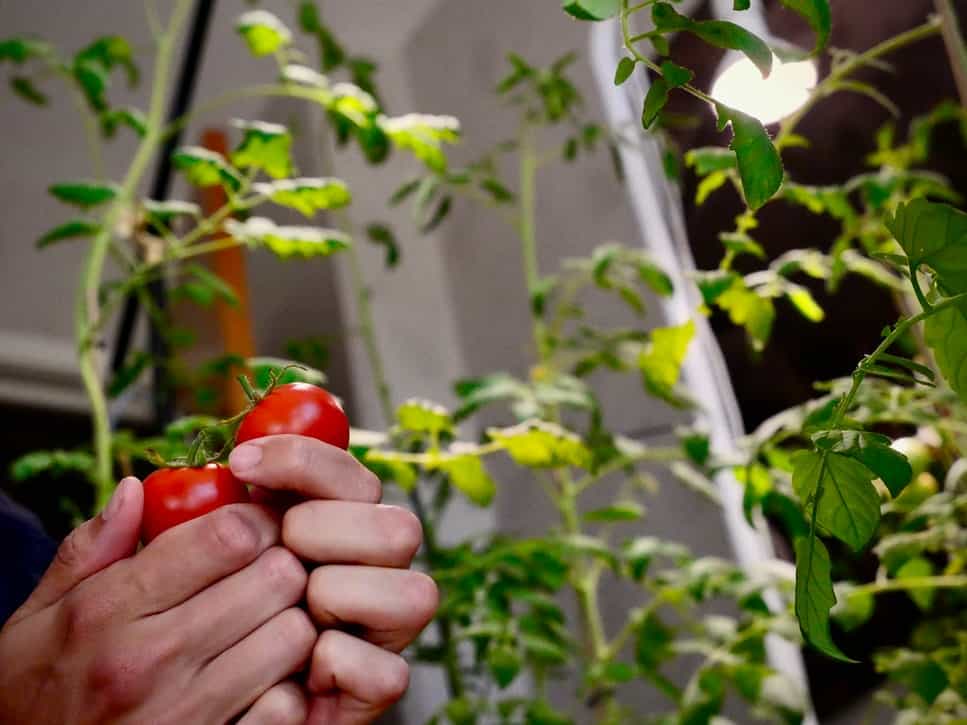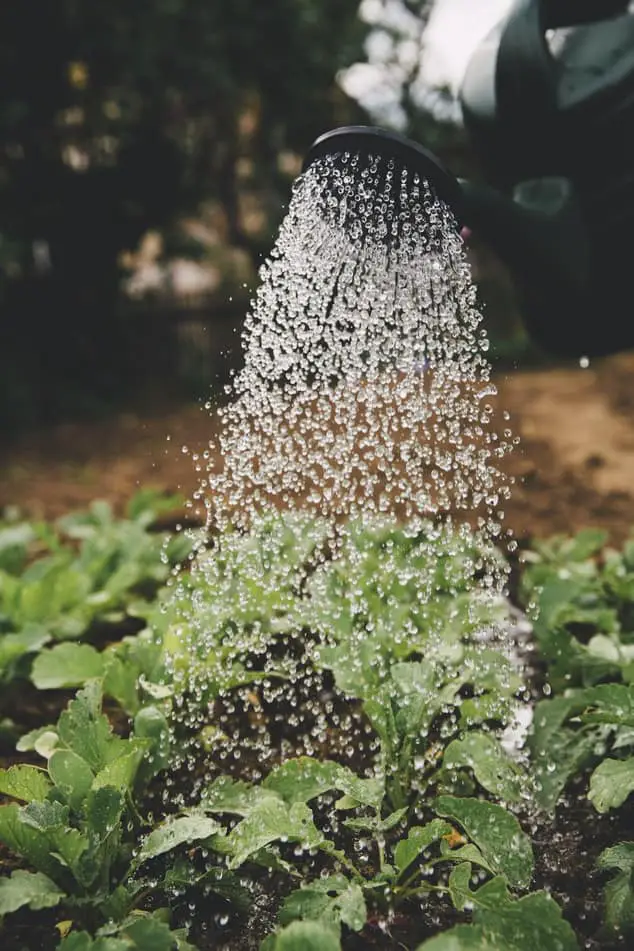Permaculture is the development and philosophy of adopting sustainable, self-sufficient agricultural ecosystems and consciously designed landscapes. Permaculture is the combination of two words: the Latin word “Perma” means “sustainable,” and the French word “culture” meaning “cultivation.”
Table of Contents
History
The term “permanent Agriculture” was first introduced by Joseph Russel Smith in 1929. He wrote the book A tree crop: A Permanent Agriculture to motivate the people, from farmers to employers, educated to non-educated, at the National and International level, to grow the amount of food they consume on their own. This was a huge challenge towards sustainability. Later on, in the 1960s, Bill Mollison (a researcher, scientist, teacher of Environmental Psychology) was the first to the public the term permaculture in his book “Permaculture One.” He has been described as the “father of permaculture” and wrote that:
“The greatest change we need to make is from consumption to production, even if on a small scale in our own Gardens. If only 10% of us do this, there is enough for everyone”.
Bill Mollison
His students worked to broaden the term from agricultural ecosystem to sustainable human habitats. The spread of the permaculture movement in Asia and Central America resulted in the establishment of many institutions, including:
- IMPA (Institute of Mesoamerican permaculture)
- Permaculture Institute of EI Salvador
- AISA (Asian Institute of Sustainable Architecture, Hong Kong.

Principles of Permaculture
Holmgren described the principles of permaculture to cover, arrange, and place the patterns, functions, and species of landscapes where they can yield their maximum potential. These ethics are listed below:
Observe and interact
Observing and responding in accordance with what is required the most in relation to the climate, soil, and topographic factors. For example, a salt-sensitive plant will not survive in the alkaline soil, and an aquatic plant will not grow in soil/dry conditions. Careful inspection (because it will be the base of all the efforts) is necessary for a sustainable landscape.
Catch and Store Energy
We have an infinite source of energy in the form of the sun. Now it’s up to us how to use that source most efficiently. Growing enough food for you and your family on your land is the best way to use this energy properly. If you don’t have a lawn/garden to grow vegetables and plants, you can contribute to permaculture through indoor plants.
Obtain a Yield
You must be getting something out of it. Permaculture provides sustainable yield both in the form of food, air, soil, water purification, reduction of global warming and mental health, peace (that we are contributing to the nature restoration), and the generation of meaningful rewards.
Apply Self Regulation and Accept Feedback
Disturbance in any ecosystem will occur when a majority of the people start thinking that they are not responsible for environmental sustainability, and this is the duty of either government or social workers! “In the Unity of our Nations rests the glorious future of our peoples.” Encourage others to speak against the wrong activity and accept where you have gone wrong.
Use and Value Renewable Resources
Reduce, Reuse, Recycle, and Regulate are the key necessities for a sustainable landscape. Instead of excessive use of non-renewable and pollution-causing resources, we should focus more on renewable energy resources like powering homes with solar panels, cleaning wastewater, growing your own food, and growing trees for a safe future.
Produce No Waste
Is it possible to produce no waste? Obviously not. But it is possible to waste nothing. Buying less, recycling to the maximum, and wasting nothing (both biotic and abiotic factors) will decide a sustainable and happy forthcoming.
Design from Patterns to Details
Observe the climatic, societal mindset, and trends for designing patterns, for example, which species, climatic conditions, and public liking and disliking will decide the basis of the first step towards permaculture.
Integrate Rather than Segregate
Environmentalists believe that “Plants are the only assurance for a safe future.” They provide food, shelter, wildlife habitat, removal of toxic gases, reduced soil erosion/other problems, and are the source of rains. We need to work together with the plants to save this earth. They can do it alone, especially if we keep fighting them.
Use Small and Slow Solutions
“Long-term consistency trumps short-term intensity.” It is better to start from a single, healthy plant and grow it to make it a tree rather than buying many but caring for none. In the same way, amend the soil using organic fertilizers instead of instant synthetic fertilizers. Start small, but think big.
Use and Value Diversity
“Diversity is an art of working independently together,” the beauty of an ecosystem and a landscape lies in diversity. Try to use non-traditional, difficult to plant, different colored, environment-friendly plants, flowers, and trees and finding new ways that they can interact with each other.
Use Edges and Value the Marginal
One tree produces hundreds of seeds every season. If we plant at least half of those seeds, it would be enough for a sustainable landscape. But unfortunately, we are not planting even two percent of those seeds. Use your lawn to raise vegetables or plant a single fruit tree in an empty corner of your backyard. Don’t be the standard, be the difference, blur the lines.
Creatively Use and Respond to Change
Permaculture prepares the whole community to respond to a sudden, unexpected change intelligently. For example, to fight against drought, disease attack, climate change, etc.

Permaculture Tools
Layers:
Layers offer various designing elements such as heights, shapes, combinations to develop a harmonious relationship between all these tools. The aim is to properly and wisely use the whole available space in the following different ways:
- Canopy/highest layer: it entails large timber trees, nitrogen-fixing, and nuts trees (you can add any tall tree you like).
- Sub-canopy/understory layer: it includes the fruit trees that are evergreen/deciduous and grows lower than ornamentals, for example, apple, fig, plum, apricot, persimmon, etc.
- Shrub layer: woody shrubs of medium height (5-6 ft.) come under this layer—Blackberry, raspberry, chokeberry, buckthorn, gooseberry, etc.
- Herbaceous layer: This covers a diverse group of herbaceous, shelter-giving herbs (to the beneficial insects) and medicinal plants. These plants would include; asparagus, sun-flower, brassica, artichoke, etc.
- Soil surface/ground cover: lies in between herbaceous and ground cover layers. The plants in this layer function to cover bare patches, tolerant to moderate foot traffic, and grow closer to the ground as well. These plants would include; yarrow, Borage, Oregano, Mint, lemon, and strawberries.
- Root layer: This layer contains root crops (garlic, onion, radish, sweet potato, etc.), beneficial insects, fungi, worms, and nematodes that function together to make the soil fertile, decompose the organic matter, and are important in the nitrogen recycling process.
- Vertical layer: This layer covers woody and non-woody vines, creepers, and climbers—grapes, kiwi vine, cinnamon, lima beans, etc.
Zones:
The thoughtful planning and planting of elements of the landscape into zones so that the most accessed will be placed in the first zone and so on.
- Zone 0: the simple, home zone. The aim is to reduce the energy and irrigation requirements and develop a sustainable, comfortable environment to live and work in.
- Zone 1: the elements that demand frequent attention need to be visited and should be nearest to the house, for example, soft fruits (strawberries, raspberries, etc.), greenhouse crops, compost bin, etc.
- Zone 2: perennial plants are sited here as they require less frequent visits.
- Zone 3: The main domestic and trade crops are grown and require weekly visits.
- Zone 4: for timber production, wild plant collection only.
- Zone 5: a wild area to host insects, bacteria, microorganisms. Very often visited by humans.

Permaculture practices:
Forest gardening:
Forest Gardening is a combination of agronomy (production of commercial crops) and forestry (production and forest management). This has been a successful approach toward a sustainable ecosystem. It integrates the principles and relationships of permaculture to grow food crops and timber wood trees in the same place. A practical example of agroforestry/permaculture is “Kandayan Tree Garden in Southeast Asia.
Plants take ten to fifteen years to become trees. The benefit of agroforestry is that the area between rows and plants can be utilized for the production of crops giving seasonal income while trees are growing at the same time. You can plant seasonal vegetables and trees (Willow, Eucalyptus, Deodar, or fruit plants) in your garden simultaneously.
Urban permaculture:
Suburban aims to modify the cities to make them greener, healthier, and sustainable. They are transforming vacant places, edible landscaping, rainwater storage/catchment, a garage into a front-yard garden, school activities for promoting the green urban movement, large city buildings growing plants on their walls and roofs, etc.
Natural building:
Natural building applies permaculture principles to construction. Use of straw bale, Taipa (rammed earth for building walls), chalk, or lime), cob/Colm (made from sub-soil and sometimes lime), adobe, etc., instead of using cement, paints, and varnishes that emit carbon dioxide and other volatile organic compounds.
In your garden, use structure/boxes/planters made up of above mentioned environmentally friendly materials.
Storage of rainwater:
Wisely collecting and using rainwater for irrigation, livestock, and drinking are the most efficient permaculture practices. You can grow nothing without water, so why not store the water we are getting for free!
Stormwater harvesting is collecting rainwater by designing and utilizing unique methods to increase the water table, landscape irrigation, and greenery while reducing erosion.
Veganic permaculture:
It is the addition of a fourth basic value that is “animal care” in the existing three core ethics of permaculture:
- Earth care
- People care
- Fare Share
Not consuming domesticated animals in order to increase soil fertility and recognizing the importance of free-living animals for ecosystem balance are two key factors for a sustainable landscape.
Restricted pruning in plants:
“A mature leaf can generate/release oxygen enough for ten people to inhale for one year.” Experiments in temperate fruit plants showed that the un-pruned trees showed more tolerance and survival against chilling conditions as compared to pruned trees. So if we are getting all these benefits, then why prune? It’s time to adopt “do nothing” farming.
Conclusion:
People frequently asked “where do I start?” the answer is always “at your doorstep.” When everyone contributes to the degradation of the landscape and ecosystem, why isn’t everyone taking part in the re-balance and restoration of that same ecosystem! Being a Floriculturist, I would suggest every home-owner keep at least three to five potted plants indoor/each room, establish grass at 136 sq. ft. area, and plant one evergreen tree in the corner of your front yard if you want a sustainable landscape. As it takes many years to destroy an ecosystem, it will take many years to make it better and rebuild the ecosystem.
References:
Holmgren, D. (2020). Essence of permaculture. Melliodora Publishing.
Hirschfeld, S., & Van Acker, R. (2020). Permaculture farmers consistently cultivate perennials, crop diversity, landscape heterogeneity, and nature conservation. Renewable Agriculture and Food Systems, 35(3), 342-351.
Oliveira, H., & Penha-Lopes, G. (2020). Permaculture in Portugal: Social-Ecological Inventory of a Re-Ruralizing Grassroots Movement. European Countryside, 12(1), 30-52.
Bulut, Z., & Yılmaz, S. (2008). Permaculture Playgrounds as a New Design Approach for Sustainable Society. International Journal of Natural & Engineering Sciences, 2(2).
Suh, J. (2014). Towards sustainable agricultural stewardship: evolution and future directions of the permaculture concept. Environmental Values, 23(1), 75-98.
Rhodes, C. J. (2012). Feeding and healing the world: through regenerative agriculture and permaculture. Science progress, 95(4), 345-446.
Krebs, J., & Bach, S. (2018). Permaculture—Scientific evidence of principles for the agroecological design of farming systems. Sustainability, 10(9), 3218.
Mannen, D., Hinton, S., Kuijper, T., & Porter, T. (2012). Sustainable organizing: A multiparadigm perspective of organizational development and permaculture gardening. Journal of Leadership & Organizational Studies, 19(3), 355-368.
Vitari, C., & David, C. (2017). Sustainable management models: innovating through permaculture. Journal of Management Development.

